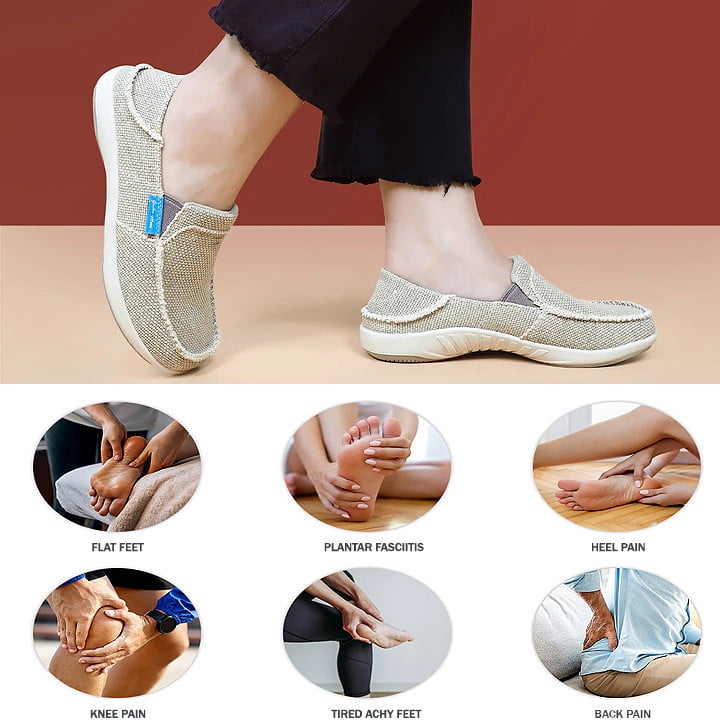Whether you’re an avid hiker, a working professional, or simply someone who enjoys being on their feet, understanding the importance of supportive footwear is crucial, especially for those suffering from plantar fasciitis. This painful condition affects the plantar fascia—a thick band of tissue that connects your heel to the front of your foot. Let’s dive into understanding orthopedic shoes for plantar fasciitis and how they can dramatically improve your quality of life.
Understanding Plantar Fasciitis
Plantar fasciitis is characterized by sharp pain at the bottom of the heel, which can often feel worse in the morning or after prolonged periods of sitting. The discomfort arises from inflammation of the plantar fascia tissue, which can be exacerbated by improper footwear. Here’s a closer look at the symptoms and causes.
Symptoms of Plantar Fasciitis
- Sharp pain in the heel, especially first thing in the morning
- Pain that increases after prolonged standing or sitting
- Stiffness in the foot
- Swelling at the heel
Common Causes of Plantar Fasciitis
- Excessive running or walking
- Foot arch issues (flat feet or high arches)
- Obesity, which increases the stress on the plantar fascia
- Inappropriate footwear
- Occupational hazards for those who stand for long periods
The Role of Orthopedic Shoes
Orthopedic shoes are designed specifically to provide support and alleviate pain associated with foot conditions, including plantar fasciitis. They offer a combination of comfort, stability, and structure that traditional shoes often lack.

Features to Look for in Orthopedic Shoes
- Arch Support: Proper arch support helps distribute weight evenly across the foot.
- Cushioned Insoles: Soft cushioning can absorb shock and reduce pressure on the heel.
- Heel Support: A firm heel counter stabilizes the foot and prevents excessive movement.
- Wide Toe Box: A spacious toe box helps prevent pinching and creates comfort for your toes.
- Adjustable Straps: Allows for a customized fit, accommodating foot swelling or varying foot sizes.
Top Orthopedic Shoe Brands for Plantar Fasciitis
In the U.S., several footwear brands are renowned for their orthopedic shoes. Below, we explore some of the best options available.

1. New Balance
New Balance is a top choice for many due to its wide range of sizes, including options for higher arches and wider feet. Their shoes often feature supportive technology and cushioning systems aimed at reducing foot fatigue.
2. Brooks
Known for their running shoes, Brooks offers exceptional arch support and cushioning, making them suitable for casual wearers as well. Their “BioMoGo DNA” midsole adapts to runners’ strides, providing personalized comfort.

3. ASICS
ASICS is renowned for its Gel technology, designed to provide excellent shock absorption. Their shoes are popular among athletes and casual walkers alike.
4. Hoka One One
With a reputation for maximal cushioning, Hoka One One shoes are often recommended for individuals who spend long hours on their feet. Their unique design offers a soft landing with every step.

5. Dansko
Popular among professionals who spend all day on their feet (e.g., nurses, teachers), Dansko clogs deliver exceptional support and comfort. They have a spacious toe box and a contoured footbed, making them ideal for plantar fasciitis.
Comparison Table of Top Orthopedic Shoes
| Brand | Model | Arch Support | Cushioning | Price Range |
|---|---|---|---|---|
| New Balance | 990v5 | Excellent | Soft | $175-$200 |
| Brooks | Ghost 14 | Very Good | Medium | $130-$150 |
| ASICS | Gel-Nimbus 23 | Good | High | $150-$160 |
| Hoka One One | Bondi 7 | Good | Maximal | $160-$180 |
| Dansko | Professional Clog | Very Good | Medium | $130-$150 |

Real-World Experiences and Case Studies
To illustrate the impact of orthopedic shoes on individuals suffering from plantar fasciitis, we gathered some real-world experiences.
Case Study 1: Sarah’s Transformation
Sarah, a nurse in New York, struggled with plantar fasciitis for over a year. After trying numerous shoe brands, she finally purchased a pair of Dansko Professional Clogs. Within weeks, she noticed significant improvement in her foot pain. Sarah credits the shoe’s supportive structure, which allowed her to work long shifts without discomfort.

Case Study 2: Mark’s Running Journey
Mark, an avid runner in California, faced debilitating heel pain that made it difficult to maintain his weekly running schedule. After consulting with a podiatrist, he switched to Brooks Ghost 14 running shoes. Mark reports that the enhanced cushioning and arch support allowed him to return to running pain-free. His experience highlights the importance of selecting the right shoes for athletic activities.
Tips for Choosing the Right Orthopedic Shoes
Selecting the right orthopedic shoes is essential for alleviating discomfort related to plantar fasciitis. Here are some tips to guide your decision:

1. Get Professionally Fitted
Visit a specialty shoe store and have your feet measured. Remember, foot size can change over time, so ensure you’re wearing the correct size.
2. Consider Custom Orthotics
If over-the-counter options aren’t enough, consider custom orthotics that provide additional arch support tailored to your foot type.

3. Look for Quality Materials
Opt for shoes made from breathable materials to keep your feet cool, especially in hot climates.
4. Allow for Break-In Time
When purchasing new orthopedic shoes, give yourself time to break them in gradually instead of wearing them for long periods immediately.
5. Read Reviews
Before making a purchase, read reviews from other customers to gauge their experiences with the shoes regarding comfort and durability.
Pros and Cons of Orthopedic Shoes
Pros
- Reduces heel pain associated with plantar fasciitis
- Provides essential support and cushioning
- Available in various styles to suit personal preferences
- Can enhance overall foot health in the long term
Cons
- Can be more expensive than regular footwear
- May not always align with current fashion trends
- Some models may take time to get used to initially
Successful Product Highlights
Let’s spotlight some standout models within the orthopedic shoe category that could be beneficial for those suffering from plantar fasciitis.
1. New Balance 990v5
This sneaker provides excellent stability and cushioning. It is highly rated by users, particularly for long days on your feet.
2. Brooks Ghost 14
With significant accolades from runners, the Ghost 14 combines comfort and support, making it an ideal choice for weekend joggers or those who enjoy a brisk walk.
3. Hoka One One Bondi 7
The Bondi 7 is praised for its maximalist cushioning and is often referred to as one of the most comfortable shoes on the market.
FAQs about Orthopedic Shoes for Plantar Fasciitis
1. What are orthopedic shoes?
Orthopedic shoes are designed to provide support and alleviate pain from various foot conditions, including plantar fasciitis.
2. How do I know if I need orthopedic shoes?
If you experience chronic foot pain, especially in the heel, and traditional footwear does not provide relief, it may be time to consider orthopedic shoes.
3. Can I wear orthopedic shoes casually?
Yes! Many orthopedic shoes are designed to be stylish and comfortable for everyday wear.
4. Are orthopedic shoes covered by insurance?
Some insurance providers may cover a portion of the costs, especially if prescribed by a healthcare professional. Check with your insurance provider for details.
5. Can I customize orthopedic shoes?
Many brands offer options for custom orthotics that can be fitted to the shoe for additional support.
6. How do I break in orthopedic shoes?
Start by wearing them for short periods around the house and gradually increase the duration as your feet adapt.
7. Are there specific shoe brands recommended for active individuals?
Brands like Brooks, ASICS, and Hoka One One are often recommended for active individuals due to their superior cushioning and support features.
8. How often should I replace orthopedic shoes?
Generally, it’s advisable to replace orthopedic shoes every 6-12 months, depending on usage and wear.
For more information on foot health and footwear, you may want to visit the American College of Foot and Ankle Surgeons.
Conclusion
Investing in a good pair of orthopedic shoes can dramatically improve your comfort and quality of life, particularly if you suffer from plantar fasciitis. By understanding your needs and exploring the various options available, you can find the perfect footwear that combines both support and style. Comfort should never be an afterthought, and with the right shoes, you can step out into your day pain-free and ready to take on the world.